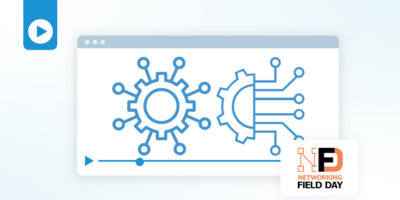There’s no getting around it – bad data can lead to all kinds of problems and disruptions in IT. One of the main sources of bad data is human errors, which severely limit your ability to automate. As you create automations from processes, it’s important to evaluate where human interaction is involved, with the understanding that bad data can occur there and determine ways to mitigate that human involvement through additional automation steps as manual operations only increase the risk for errors and downtime.
When creating an automation strategy, teams should aim to reduce as many of those human-centric steps and integrate automations directly with their IT systems to manipulate data to ensure it’s correct and consistent, shifting to a machine-centric approach. Automations should be able to integrate with any system and source of truth to reduce the time it would normally take a human to swivel chair between them. This increases the fidelity of the data by removing human errors and verifies that the intended changes made in an automation are correct.
Automation is imperative to mitigate that risk and provide trust.
Shifting From Human-Centric to Machine-Centric
In order to have full trust in automations, teams must find a solution with a machine-centric focus that allows them to increase automation as they grow trust in the data, tools, and processes.
The Importance of Machine-First Network Automation
Historically, automations are based on human-centric tasks where teams control every task and in some cases, there is no automation to be found at all. The lack of automation creates a situation where teams can make avoidable mistakes through manual effort and inputs. Automations should be based on a machine-first network automation platform that is designed to move at your own pace based on proven trust.
By adopting network automation, organizations can start small by automating at their own pace and gradually expand their automation efforts one task at a time until they are confident in the data, tools, and processes to eventually reach a fully automated state.
Network Automation Solutions Should Embrace:
- Best Practice Use Case – There’s no need to start figuring out the best practices on your own when you can leverage an automation already built based on industry and use cases best practices, increasing trust in the process.
- Form Driven Automation – The ability to capture tribal knowledge and use in a form driven automation ensures entire teams are using the right processes and data.
- Human Checkpoints – The right platform should allow full control over when and where human checkpoints are required so you can automate at your own pace with rollback capabilities.
How Itential Provides Trust In Your Data, Tools, & Processes
With Itential’s low-code, drag-and-drop platform, network teams can easily design, build, and visualize repeatable automation workflows. This allows teams to build automations that start small and gradually build to end-to-end automations once trust in gained. Our vendor-agnostic solution connects to everything and acts as an aggregated network API, transforming and federating functionality and data from existing northbound and southbound systems so that your automations are always acting on the current and most accurate data possible. Once automations are running, Itential’s Operations Manager provides historical metrics on every automation, giving the insight teams need to iterate and improve their automations.
Learn more out Itential’s integration and federation capabilities that provide the highest level of trust in your automations in our white paper, “Itential Automation Platform: Network Integration, Federation & Automation.”






